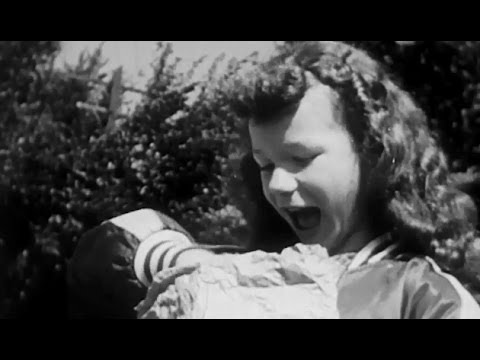more at
‘Introduces Ray in number of social situations that are used to trace growth in his understanding and practice of friendliness. Demonstrates how Ray corrects his social errors after his brother talks to him about the responsibility of friendship.’
Public domain film from the Prelinger Archives, slightly cropped to remove uneven edges, with the aspect ratio corrected, and mild video noise reduction applied.
The soundtrack was also processed with volume normalization, noise reduction, clipping reduction, and/or equalization (the resulting sound, though not perfect, is far less noisy than the original).
Friendship is a relationship of mutual affection between two or more people. Friendship is a stronger form of interpersonal bond than an association. Friendship has been studied in academic fields such as sociology, social psychology, anthropology, and philosophy. Various academic theories of friendship have been proposed, including social exchange theory, equity theory, relational dialectics, and attachment styles. A World Happiness Database study found that people with close friendships are happier.
Although there are many forms of friendship, some of which may vary from place to place, certain characteristics are present in many types of friendship. Such characteristics include affection, sympathy, empathy, honesty, altruism, mutual understanding and compassion, enjoyment of each other’s company, trust, and the ability to be oneself, express one’s feelings, and make mistakes without fear of judgment from the friend.
While there is no practical limit on what types of people can form a friendship, friends tend to share common backgrounds, occupations, or interests, and have similar demographics…
Developmental psychology
In the typical sequence of an individual’s emotional development, friendships come after parental bonding and before pair bonding. In the intervening period between the end of early childhood and the onset of full adulthood, friendships are often the most important relationships in the emotional life of the adolescent, and are often more intense than relationships later in life. The absence of friends can be emotionally damaging.
The evolutionary psychology approach to human development has led to the theory of Dunbar’s number, proposed by British anthropologist Robin Dunbar. He theorized that there is a limit of approximately 150 people with whom a human can maintain stable social relationships.
Childhood
In childhood, friendships are often based on the sharing of toys, and the enjoyment received from performing activities together. These friendships are maintained through affection, sharing, and creative playtime. While sharing is difficult for children at this age, they are more likely to share with someone they consider to be a friend (Newman & Newman, 2012). As children mature, they become less individualized and more aware of others. They begin to see their friends’ points of view, and enjoy playing in groups. They also experience peer rejection as they move through the middle childhood years. Establishing good friendships at a young age helps a child to be better acclimated in society later on in their life (Newman & Newman, 2012)…

